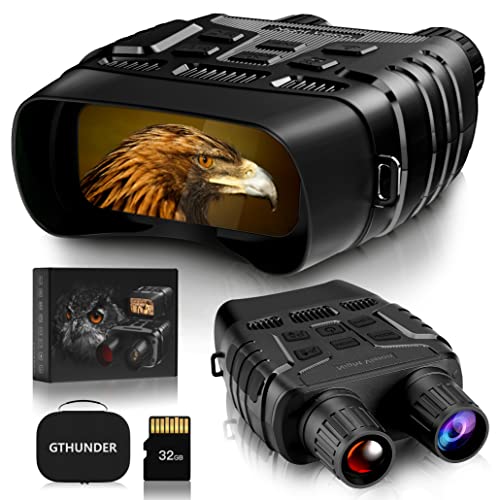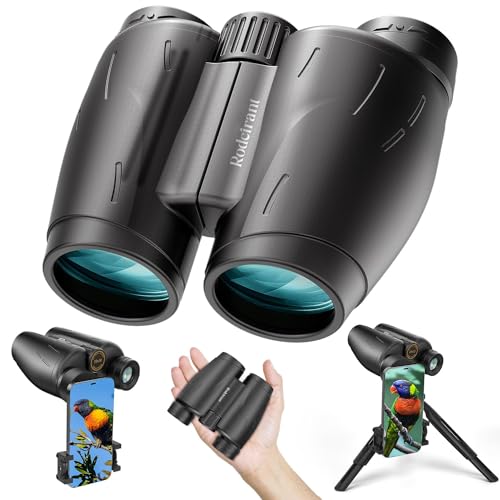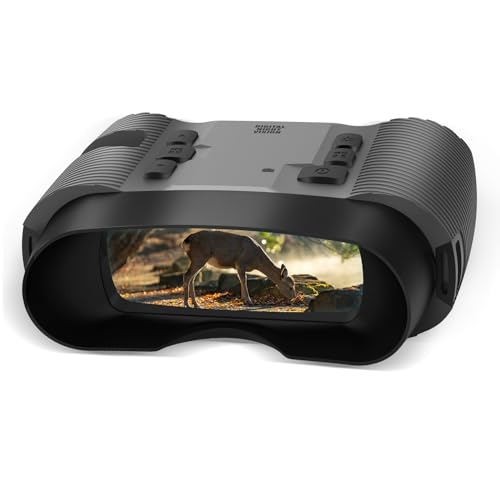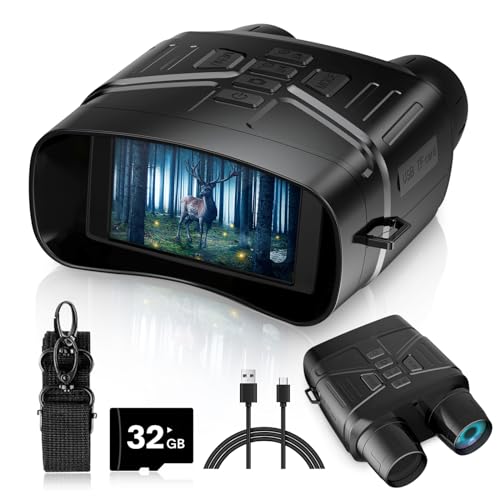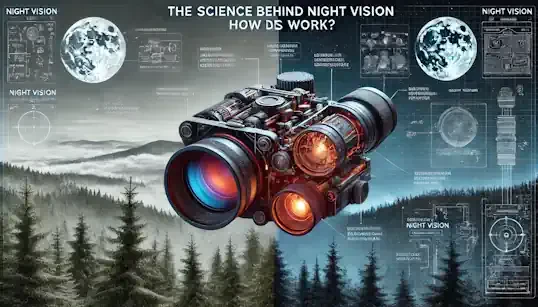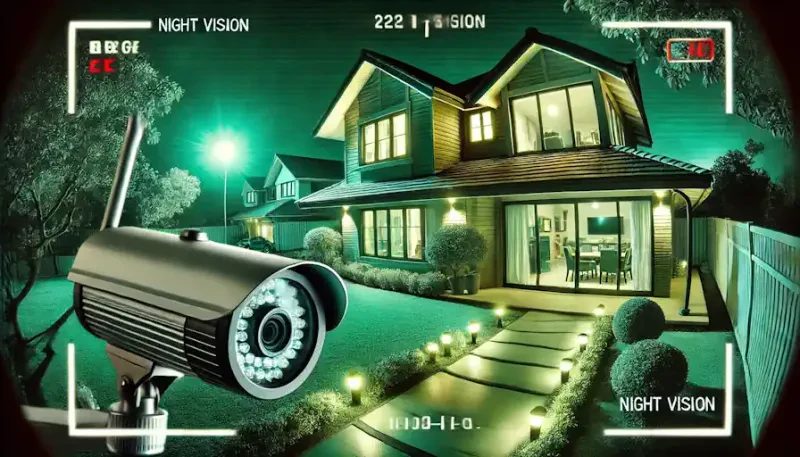Enhancing Visual Acuity in Low-Light Conditions
The evolution of night vision binoculars is intrinsically linked to the relentless pursuit of enhanced visual acuity in low-light environments. Advancements in image intensifier technology have revolutionized the way these devices amplify ambient light, resulting in significantly brighter and clearer images even in the most challenging conditions. Traditional intensifier tubes have been refined, becoming more compact, energy-efficient, and capable of producing higher resolution images. This translates to a more detailed and informative view for the user, whether they are observing wildlife, navigating in the dark, or performing surveillance operations.
Incorporating digital sensors and algorithms into night vision binoculars has ushered in a new era of image processing. These digital components work in synergy with image intensifiers, analyzing and refining the captured image data to optimize contrast, reduce noise, and enhance overall image quality. Digital processing algorithms can perform tasks such as edge enhancement, image stabilization, and automatic gain control, resulting in a clearer, more stable, and more informative image. This integration of digital technology is pushing the boundaries of what's possible in low-light vision, enabling users to see details and nuances that were previously hidden in the darkness.
The pursuit of the perfect night vision experience extends beyond mere amplification of light. Manufacturers are meticulously focusing on improving clarity, contrast, and color rendition to deliver a more natural and immersive viewing experience. Advanced optics, specialized coatings, and digital enhancements are employed to create images that are not only bright but also rich in detail and color. This means users can more easily distinguish between objects, identify subtle variations in terrain, and even perceive a wider range of colors in low-light conditions.
Optimizing low-light performance is a continuous effort that involves every aspect of night vision binocular design and engineering. From the selection of high-quality components to the precise calibration of sensors and algorithms, manufacturers are constantly striving to extract the maximum amount of information from the available light. This holistic approach to optimization ensures that night vision binoculars deliver exceptional clarity and detail, regardless of the ambient light conditions. Whether it's a starry night or a moonless overcast evening, these devices are designed to provide a reliable and informative view.
While traditional night vision technology primarily relied on amplifying near-infrared light, the future of this technology is expanding into the realm of broader spectrum vision. Advancements in sensor technology and image processing are enabling the capture and visualization of a wider range of wavelengths, including those closer to the visible light spectrum. This expanded spectral sensitivity not only enhances image quality but also opens up new possibilities for applications like enhanced nighttime navigation, wildlife observation, and surveillance.
Extending Range and Field of View for Enhanced Situational Awareness
The evolution of night vision binoculars isn't solely focused on enhancing visual clarity; it's also about expanding the horizons of perception. One of the key areas of advancement lies in the introduction of larger objective lenses. These lenses, positioned at the front of the binoculars, play a crucial role in gathering light. By increasing the diameter of the objective lens, manufacturers allow more light to enter the system, resulting in improved light-gathering capabilities and extended range. This means users can see objects clearly at greater distances, which is particularly valuable for applications such as wildlife observation, surveillance, and search and rescue operations.
A wider field of view (FOV) is another critical aspect of enhancing situational awareness. Binoculars with a wider FOV allow users to capture a broader panorama of their surroundings with a single glance. This not only improves the overall viewing experience but also provides a tactical advantage in situations where peripheral vision is crucial. Whether it's spotting movement in the periphery or assessing a wider area for potential threats, a wider FOV gives users a more comprehensive understanding of their environment.
In low-light conditions, depth perception can be challenging. However, advancements in night vision technology are addressing this issue. By utilizing advanced optics, stereoscopic viewing systems, and digital enhancements, manufacturers are improving the depth perception capabilities of night vision binoculars. This means users can better judge distances and assess the relative positions of objects in their field of view, even in the darkest of nights. Improved depth perception enhances safety and accuracy in various applications, from hunting and navigation to tactical operations.
Maximizing range performance is a constant pursuit in the development of night vision binoculars. To achieve this, manufacturers are employing specialized lens coatings and advanced optical designs. Anti-reflective coatings minimize light loss and glare, ensuring that as much light as possible reaches the user's eyes. Furthermore, sophisticated lens designs can correct for aberrations and distortions, resulting in a clearer and sharper image at longer distances. By combining these optical advancements, manufacturers are pushing the limits of range performance, enabling users to see farther and clearer than ever before.
The integration of laser rangefinders and target acquisition systems represents a significant leap forward in night vision technology. Laser rangefinders provide instant and accurate distance measurements to targets, enabling users to make informed decisions in real time. Target acquisition systems, often coupled with laser rangefinders, assist users in identifying, tracking, and engaging targets with precision. These integrated systems are particularly valuable in tactical applications where speed and accuracy are paramount.
Integrating Smart Features and Connectivity for Enhanced Functionality
The evolution of night vision binoculars is not solely about improving visual perception in low-light conditions; it's also about transforming them into multifunctional tools that enhance the overall user experience. The integration of augmented reality (AR) overlays is a prime example of this trend. By overlaying digital information onto the real-world view, night vision binoculars can provide users with a wealth of contextual data in real time. Imagine being able to identify constellations in the night sky, track the movement of wildlife, or receive navigation guidance without ever taking your eyes off the scene. This seamless fusion of digital and physical realms opens up endless possibilities for exploration, education, and tactical applications.
GPS navigation and mapping are no longer confined to smartphones and dedicated GPS devices. Night vision binoculars are increasingly incorporating these features, allowing users to pinpoint their location, plan routes, and navigate with confidence even in the darkest of environments. Whether you're hiking through a remote wilderness area or conducting surveillance in unfamiliar territory, having real-time location information at your fingertips adds a layer of safety and convenience. This integration of navigation technology with night vision capabilities empowers users to explore with confidence and precision.
The ability to document and share observations is another key aspect of modern night vision binoculars. Many models now come equipped with built-in image and video recording capabilities. This allows users to capture stunning night-time footage of wildlife, celestial events, or other phenomena that would otherwise be invisible to the naked eye. These recordings can be stored, reviewed, and shared with others, creating a valuable resource for education, research, and entertainment. Additionally, in professional settings, the ability to record evidence can be crucial for law enforcement, security personnel, and researchers.
Wireless connectivity is further enhancing the functionality and versatility of night vision binoculars. By connecting to smartphones, tablets, or other devices, users can access a wide range of additional features and capabilities. For example, they can stream live video footage to a remote location, control the binoculars' settings remotely, or even share their view with others in real time. This connectivity not only expands the possibilities for collaboration and communication but also allows users to leverage the processing power and storage capacity of their connected devices to enhance the overall night vision experience.
Enhancing Durability and Ruggedness for Demanding Environments
The modern adventurer demands gear that can keep up with their lifestyle, and night vision binoculars are no exception. Manufacturers are responding to this demand by introducing shockproof designs that can withstand accidental drops, bumps, and jolts without compromising functionality. This means you can confidently take your binoculars on rugged hikes, bumpy boat rides, or even turbulent flights, knowing that they are built to endure the unexpected.
But durability goes beyond shock resistance. Waterproofing is another essential feature for night vision binoculars, especially for those who venture into wet environments. Whether you're kayaking through a rainforest or navigating a storm at sea, waterproof binoculars ensure that your vision remains clear and unobstructed. These devices are designed with seals and gaskets that prevent water from seeping into the internal components, maintaining their functionality even in the most challenging conditions.
The choice of materials plays a pivotal role in enhancing the durability and ruggedness of night vision binoculars. Manufacturers are increasingly turning to advanced materials like carbon fiber and titanium, known for their exceptional strength-to-weight ratio. Carbon fiber offers remarkable rigidity and impact resistance, while titanium provides unparalleled corrosion resistance and durability. These materials not only make the binoculars more robust but also contribute to their lightweight and ergonomic design, making them comfortable to use for extended periods.
Extreme temperatures and humidity can pose significant challenges for electronic devices. However, modern night vision binoculars are designed to withstand these environmental stressors. Manufacturers are utilizing specialized coatings, seals, and ventilation systems to protect the internal components from moisture, condensation, and thermal damage. Whether you're exploring scorching deserts or freezing tundra, these binoculars are engineered to function reliably in extreme conditions, ensuring that your vision remains clear and uninterrupted regardless of the environment.
Exploring New Applications and Markets for Night Vision Binoculars
The versatility of night vision binoculars is expanding beyond traditional applications like hunting and military operations. These devices are finding new homes in the world of wildlife observation and photography. Enthusiasts and professionals alike are utilizing night vision binoculars to observe nocturnal animals in their natural habitats without disturbing them. The ability to see in low-light conditions allows for detailed observations of behavior, movement patterns, and even subtle details like eye shine, all of which contribute to a deeper understanding and appreciation of wildlife. Moreover, photographers are leveraging night vision technology to capture stunning images and videos of animals that would otherwise be impossible to document.
Search and rescue operations are another field where night vision binoculars are proving invaluable. When time is of the essence, the ability to quickly and effectively locate missing persons or survivors in low-light or nighttime conditions can be the difference between life and death. Night vision binoculars enable search and rescue teams to scan vast areas, identify potential clues, and navigate safely in challenging terrain. This technology is becoming an indispensable tool for first responders, volunteer search parties, and professional rescue organizations.
Law enforcement and security professionals are increasingly relying on night vision binoculars to enhance their capabilities. In surveillance operations, these devices allow officers to monitor activities discreetly and gather evidence in low-light environments. Night vision binoculars also aid in perimeter security, enabling security personnel to detect and respond to potential threats before they escalate. Additionally, they can be used in tactical operations, providing a clear advantage in nighttime raids, arrests, and other high-risk scenarios.
The military has long been a major user of night vision technology, and this trend continues to evolve. Night vision binoculars are now an integral part of tactical gear for soldiers and special forces operators. They are used for a wide range of missions, including reconnaissance, surveillance, target acquisition, and navigation. Advancements in miniaturization and battery technology have made these devices more compact and portable, allowing soldiers to carry them comfortably during extended missions. Moreover, the integration of digital features like augmented reality overlays and wireless connectivity is further expanding the tactical capabilities of night vision binoculars in the military domain.
Beyond professional applications, night vision binoculars are finding a growing audience in the recreational sector. Outdoor enthusiasts, campers, hikers, and stargazers are discovering the thrill of exploring the world after dark. Night vision binoculars open up a new dimension of outdoor adventure, allowing users to witness nocturnal wildlife, navigate trails under the moonlight, and observe the celestial wonders of the night sky. The increasing affordability and user-friendliness of these devices are making them more accessible to casual users, fueling a growing market for recreational night vision technology.
Balancing Performance and Affordability to Cater to a Wider Audience
Night vision technology, once reserved for military and professional applications, is becoming increasingly accessible to the general public. This democratization of night vision is driven in part by manufacturers' efforts to develop cost-effective manufacturing processes. By streamlining production lines, optimizing supply chains, and leveraging economies of scale, companies are able to produce night vision binoculars at lower costs without sacrificing quality. This translates to more affordable options for consumers, making it easier for outdoor enthusiasts, hobbyists, and even casual users to experience the benefits of night vision.
In the pursuit of affordability, manufacturers are also exploring the use of more cost-effective materials and components. While maintaining a commitment to quality and durability, companies are finding innovative ways to substitute expensive materials with more budget-friendly alternatives without compromising performance. For example, instead of using exotic lens materials, manufacturers might opt for high-quality glass with specialized coatings that achieve similar optical performance. This strategic approach to material selection helps to keep costs down while ensuring that the final product meets the needs and expectations of a wider audience.
Streamlining design and assembly processes is another avenue for achieving affordability. By simplifying the design of night vision binoculars, reducing the number of components, and optimizing assembly techniques, manufacturers can lower production costs and pass those savings on to consumers. This approach not only makes night vision more accessible but also contributes to a more sustainable and environmentally friendly manufacturing process.
To cater to a diverse range of consumers with varying budgets and needs, manufacturers are offering a broader selection of night vision binocular models. This includes entry-level options with essential features for casual users, as well as high-end models with advanced capabilities for professionals and enthusiasts. This tiered approach ensures that there is a night vision binocular for everyone, regardless of their budget or intended use.
Promoting the accessibility of night vision technology goes beyond pricing. Manufacturers are also investing in educational initiatives and marketing campaigns to raise awareness about the benefits and applications of night vision binoculars. By showcasing the diverse ways in which these devices can be used, from wildlife observation to home security, companies are encouraging more people to explore the possibilities of night vision. This democratization of the technology is not only expanding the market but also fostering a greater appreciation for the nocturnal world.
Summary
The future of night vision binoculars is a dynamic landscape of innovation and technological advancement. From enhancing visual clarity in low-light conditions through advancements in image intensification and digital processing to extending range and field of view for heightened situational awareness, these devices are becoming increasingly sophisticated tools. Integrating smart features like augmented reality overlays and GPS navigation alongside connectivity options further expands their capabilities, transforming them into multifunctional tools for exploration, research, and tactical operations. Moreover, the focus on durability and ruggedness ensures these binoculars can withstand the rigors of demanding environments, making them suitable for a wide range of professional and recreational activities. With an ever-expanding array of applications and a growing emphasis on affordability, night vision binoculars are becoming increasingly accessible to a wider audience, ushering in a new era of exploration and observation in the darkness.

